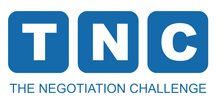Distributive negotiation, also known as distributive bargaining, is a type of negotiation in which the parties aim to divide a fixed pie of value. In other words, one party’s gain is the other party’s loss. This type of negotiation is often used in situations where there is limited availability of resources, such as when negotiating a salary or a contract.
There are a few key strategies that can be used in distributive negotiation. One is to anchor the negotiation by making the first offer. The first offer sets the reference point for the other party, and they will tend to adjust their own offers based on that reference point. Another strategy is to use leverage. Leverage is the ability to influence the other party’s behavior. This can be done by having a strong BATNA (best alternative to a negotiated agreement), or by being able to walk away from the negotiation if necessary.
Distributive negotiation can be a challenging type of negotiation, but it can be successful if the parties are prepared and use the right strategies.
Here are some examples of distributive negotiation:
- Salary negotiation: When you negotiate your salary with your employer, you are essentially dividing a fixed pie of value. The employer has a budget for salaries, and they are only willing to pay you so much. Your goal is to get as much of the pie as possible, while the employer’s goal is to give you as little as possible.
- Contract negotiation: When you negotiate a contract with a vendor, you are also dividing a fixed pie of value. The vendor has a price for their services, and they are only willing to offer you a discount up to a certain point. Your goal is to get the best possible price, while the vendor’s goal is to get the highest possible price.
- Dispute resolution: When you are involved in a dispute, such as a divorce or a lawsuit, you may need to negotiate a settlement. In a settlement, the parties agree to a compromise that is in the best interests of both parties. This is a form of distributive negotiation, as the parties are dividing a fixed pie of value.
In all of these cases, the goal of distributive negotiation is to get the best possible outcome for yourself. By understanding the principles of distributive negotiation, you can increase your chances of success.
